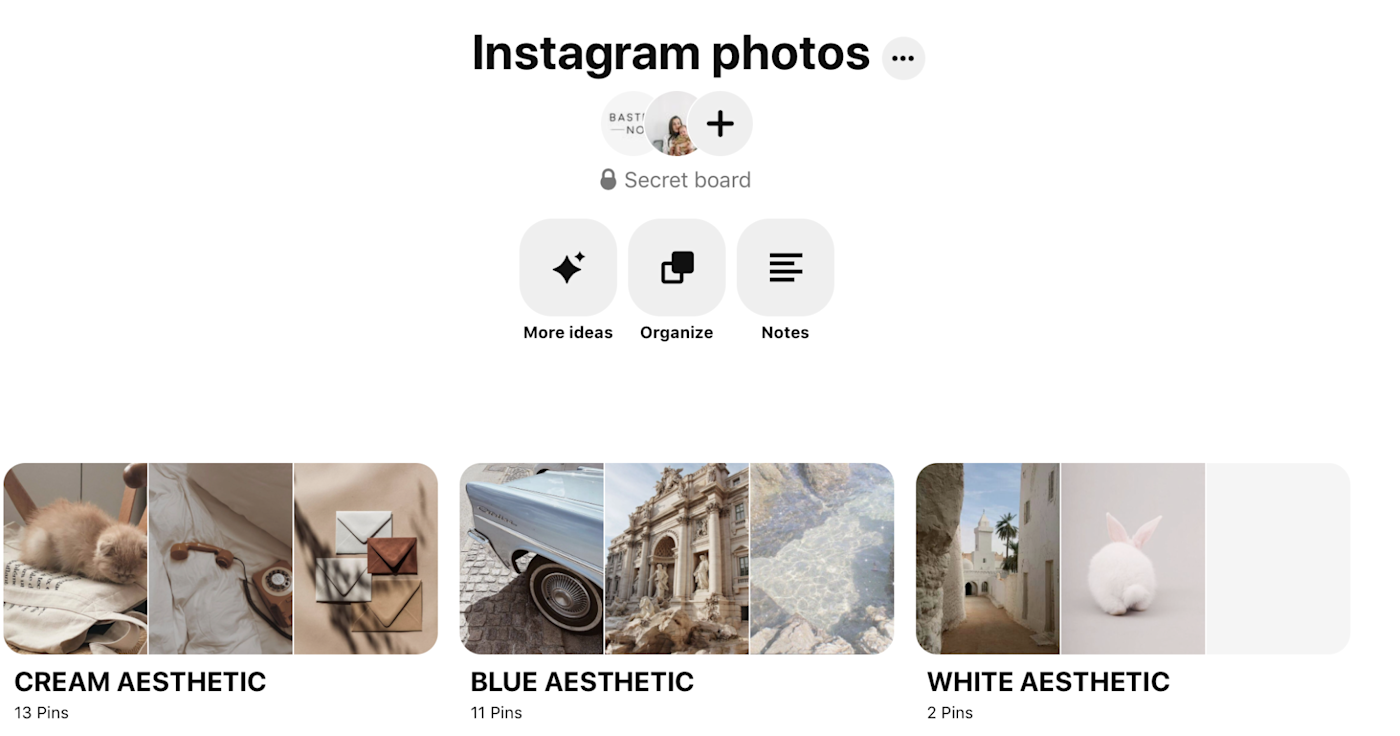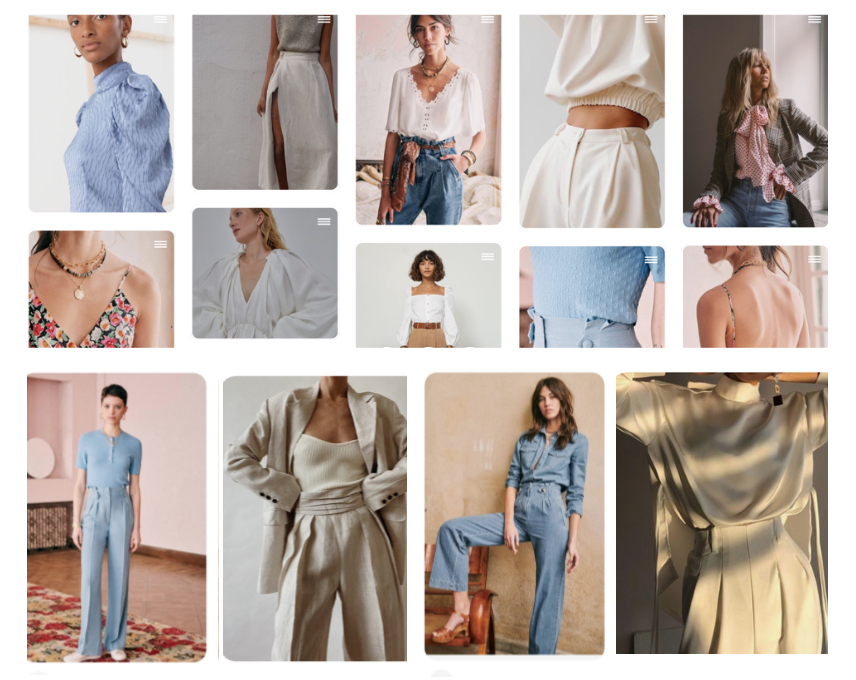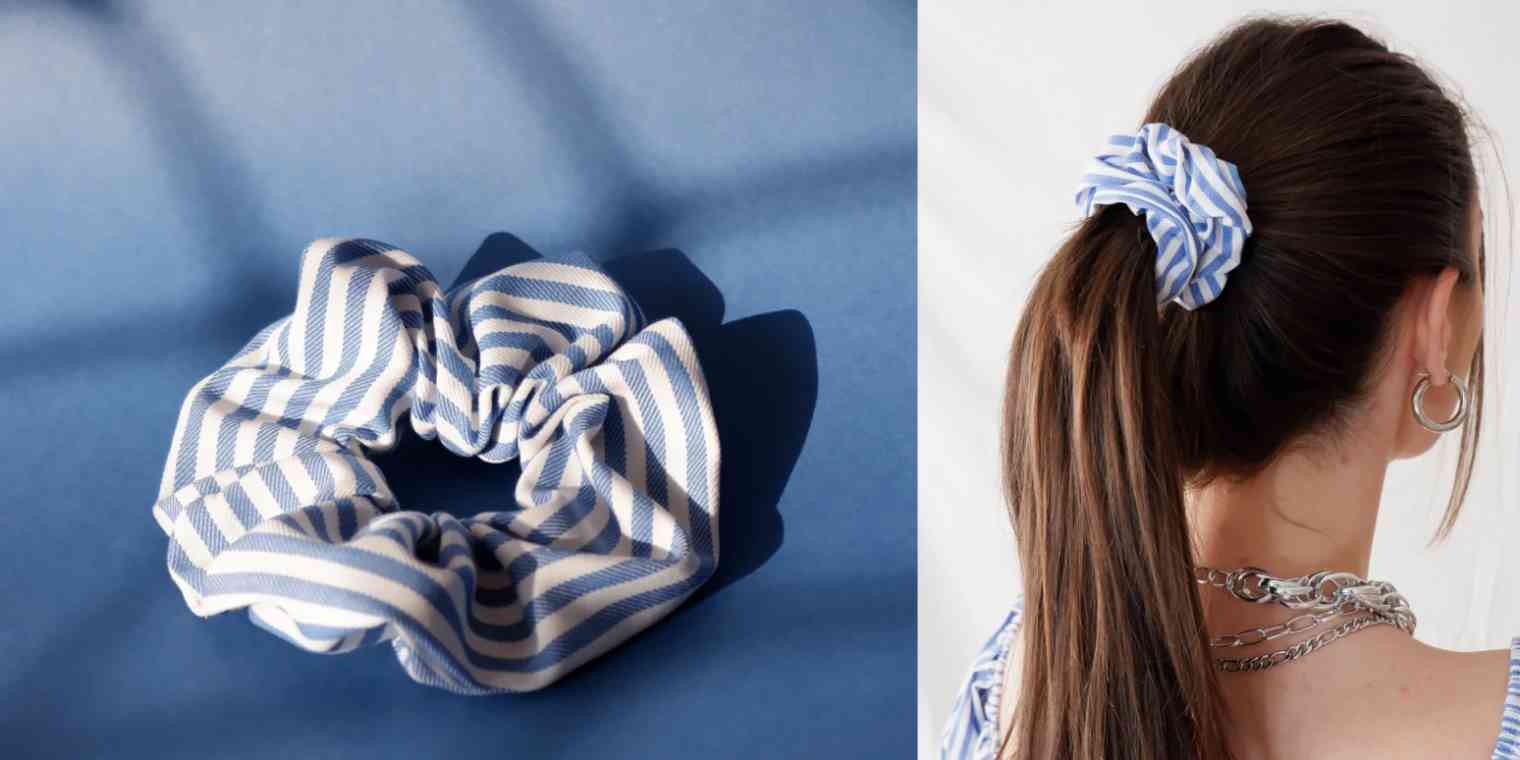People often ask me: "What's the very first thing you need to consider when launching a fashion brand?"
My answer is clear: branding. But that wasn't obvious to me when I started. Back then, juggling so many things as a one-woman show, brand development kind of slipped through the cracks. For four years, I was trying to build a recognizable aesthetic by combining other businesses' brands, each with diagonally different stories and aesthetics. It was all over the place, and it became such a nightmare that the message was obscured, and the voice was hushed by all those other brands' voices.
Especially for a fashion brand, I should have known: aesthetics matter. So here, I'll explain what I wish I'd done first and show you how we gradually came to build a recognizable brand. It still involves using other brands for inspiration—but in a way that makes it your own.
The core of your brand: a brand book
A brand book is a collection of a brand's creatives, including ethos, colors, fonts, and content. It's a working document that changes and adapts to your brand, and it also includes brand inspiration, competitive analysis, and representation of your collaborators and influencers. The goal of the brand book is, through analysis, to create a specific perspective on a topic that's uniquely yours—the distinctive voice of the company.

If you're like me and you're starting with a $0 budget, hiring a marketing agency or even a graphic designer won't be an option for you, so you'll have to cover that role yourself. And given all the other things you'll have to do, creating a brand book might not be on the top of your priority list.
I mean, who has time for that, really, when there are so many things that demand your immediate and undivided attention?
If you ever find yourself thinking this exact same thing, stop, take a step back, and rewind: a brand book could be the difference between building a brand that people love and just running a company that's gonna be there for a while.
I started working on creating a brand book for Bastet Noir two years ago, and as I did, a bunch of other pieces kind of fell into place—and it became increasingly easier to attract customers. It's not just about having a visual style guide: it's about creating a roadmap you can follow whenever things begin to get out of hand. It's there to remind you who you are.
Brand ethos
The first thing I did was come up with three things I wanted our brand to be recognized for: zero waste, socially responsible, and made-to-order/made-to-measure. I wanted to make it as clear as possible that the brand doesn't pollute, supports a vulnerable and often neglected social group (women single parents), and avoids overproduction because it's made on demand.
Easier said than done, of course. I know just how difficult it is to narrow your brand down to three things. I've been working on mine for almost four years, so don't beat yourself up if you don't have them at first. With time and research, they will come to you, and once they do, you can build off of them.
Brand colors
Once you've established what you want your brand to represent, it's time for the fun part: picking colors. As your brand evolves, these might change, but it's important to pin them down early because they will dictate not only your content but also the type of customers you attract.
I realized that I tended to gravitate more toward pastel shades, so I made a list of a few basic colors and 15-20 pastel tint variations of those colors. I put them, along with their hex codes, in our brand book. This helped us tremendously while planning our Instagram content, email campaigns, and even building our homepage.
From there, I went on Pinterest, opened a secret board, and divided it by sections to house a white aesthetic, blue aesthetic, cream aesthetic, and so on. Whenever we had a need for a certain shade, regardless of whether it was for a social post or email marketing or anything in between, I could go and immediately find something relevant without losing too much time on it.

Brand fonts
Before picking fonts, our creatives on each platform were always just...different. Even though I gravitated toward similar fonts, the reality was that the font overload meant there wasn't anything distinctive to capture a customer's attention and allow them to associate something with the brand itself.
So just like with the colors, I narrowed it down to three fonts I liked, that matched our brand ethos, and we stuck with those.
Having things like colors and fonts on paper (in your brand book) isn't just so you can remember them. It's also a great way to ground yourself whenever you get excited about another font or color—you can look back at your brand book and ask yourself: "Is this something that represents my brand, or is it just something that got me excited in the moment?"
Content goals and content
Once you know the three keywords you want your brand to represent, it's much easier to develop the content around it—you know what you represent, what you have authority on, and what you're trying to express.
Using my brand ethos as a baseline, I knew I wanted to create educational content around sustainability, transparency, social justice, women empowerment, and environmental policy. Of course, my content also needed to be SEO-friendly and help raise brand awareness.
Take a look at how I developed a content marketing strategy to get more details on how I used our story in the process.
Competitors
Your brand book is about your brand, yes, but your brand doesn't exist in a vacuum.
When you create the brand book, include at least three competitors you think are doing a great job—write down everything you like. But don't forget to note what you don't like too: you might be able to turn their weaknesses into your strengths. This will also help you refine your unique selling point (USP)—that sweet spot that everyone else seems to have missed or dodged.
I wrote brief descriptions in my brand book, but that was just the foundation. I also had a Google Sheet, and every month or so, we'd jot down what these competitors were doing: the copy on their website, their social posts, their email campaigns, you name it. We used it as inspiration, so we didn't have to reinvent the wheel.
Visual identity board
The visual identity board is a blueprint of sorts that helps you create content strategically. It can live anywhere: I use Pinterest boards and Instagram collections and then just link to those from my brand book.
You can segment your boards by competitors, collaborators, designers (if you're working on a fashion brand), or whatever else makes sense for your business. For example, I have specific boards for each competitor, and under each photo, I put notes about what I like about a particular photo and what I don't like. For designs we like, we have a team secret board that's divided by categories, and we pin all the things our team is nuts about.

These kinds of visual boards can serve both as reference and inspiration.
Standing on the shoulders of giants
As you might be able to tell from what I've said so far, I'm all about looking at what others have done and how I can use that as inspiration (or anti-inspiration, as the case may be).
When I started out, I thought that everything I did had to be new, fresh, something that had never been seen before. For example, I wanted to create a real shop experience online, but for what I envisioned back then, the technology wasn't developed fully. So I thought the next best thing was to build a standalone website—that way, when the tech was ready, I could implement it directly. I spent thousands of dollars on the development of the website instead of taking advantage of Shopify's already developed software. It was one of the first lessons I ever learned in business.
Unless you're the next Elon Musk or Mark Zuckerberg, the chances of you creating something that hasn't been invented before are slim. And if you add to that having a budget that's measured in thousands or maybe even hundreds, it's tough.
The same thing goes for your brand book. Look at your competitors, of course, but also take advantage of technology that can help you build your brand. One big example: presets.
Presets are filters that have a combination of different photo settings, like brightness and color, which are adjusted to help you get a very specific look for an image. Once you find (or adapt) one you like, you don't have to lose a lot of time to get every photo to have the same look. Just add the preset, and it's done.
For more details, you can watch this video, which talks about how to be "tapped in, but also have [your] own unique perspective."





